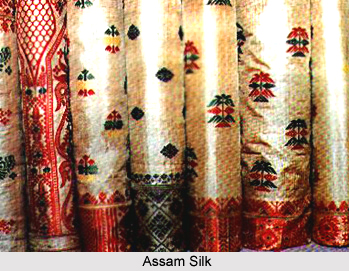 Economy of Dhemaji District is generally agriculture based. Sericulture, fishing and driftwood business are practiced in smaller scale in this district of Assam. However, sand deposition and other adverse effects of chronic floods on fertile agricultural land have made even affluent farmers land-less. As a result, a large number of people shift to greener pastures within the district to carry out horticultural practices. Lack of good communication system, shortage of power and lack of proper irrigation and marketing facilities are other factors behind the poverty of the Dhemaji District. Lack of any major and small industry is also responsible for increasing the problem of unemployment. Thus, the local economy of this district is characterized by subsistence level of production and consumption.
Economy of Dhemaji District is generally agriculture based. Sericulture, fishing and driftwood business are practiced in smaller scale in this district of Assam. However, sand deposition and other adverse effects of chronic floods on fertile agricultural land have made even affluent farmers land-less. As a result, a large number of people shift to greener pastures within the district to carry out horticultural practices. Lack of good communication system, shortage of power and lack of proper irrigation and marketing facilities are other factors behind the poverty of the Dhemaji District. Lack of any major and small industry is also responsible for increasing the problem of unemployment. Thus, the local economy of this district is characterized by subsistence level of production and consumption.
In Dhemaji district, majority of the people live in rural areas. People here are mainly categorized as cultivators, agricultural labours, marginal workers and other services like trade, commerce, storage, manufacturing, processing, repairing, etc. It clearly shows that the majority of the population of Dhemaji District is dependent on agriculture. Employment in trade, commerce and other service industries is almost insignificant. Agriculture is the main occupation and more than 85 per cent of the total population depends on it. Irrigation is largely rain-fed, with mechanized shallow tube wells. The principal mustard growing areas are Gohaingaon, Talahi, and Dhakuakhana. Pulses are mostly grown in alluvial flat lands on the riverbanks. It is significant to note that over the years people have started making experiments to see whether a shift to horticulture would be more beneficial or not.
Moreover, most families rear pigs, goats and poultry; however lack of adequate veterinary facility and knowledge of scientific breeding people continuously lose their cattle. Further, in this district, Sericulture is an age-old traditional cottage industry. In fact, next to agriculture, Sericulture is the major agro-based industry generating large number of employment in the rural areas with minimum investment cost. It plays a very crucial role in the socio-economic development of the weaker section of the rural population especially during the off-agricultural season. Dhemaji District occupy a unique place in the production of the three different kinds of silks - Pat, Muga and Eri - which have a very high demand in the national and international markets. Moreover, production of silk yarn and fabric is wide spread amongst the people of Dhemaji and Dhakuakhana. However due to lack of proper infrastructure and appropriate marketing facility this industry has not developed to its full potential. Dhemaji district has one Eri concentration centre and three Muga food plantation centres. However, there are fewer infrastructures for providing complete support to the silk industry.
Fish drying is another practice carried out during the monsoon season, mainly by the people living near the rivers in Dhemaji District. The market value of the produce is high, but poor communication facilities in the district, especially during the monsoon months, result in high transportation costs. Another factor that affects the trade badly is the lack of storage facility. There are no significant small-scale industries and not a single big industry in the entire Dhemaji District. Some of the small-scale units are registered as weaving or cane and bamboo industries; however the actual production does not have any market value. Some local people of Dhemaji District also produce mustard. Thus, it is clear that the Dhemaji District mostly has agrarian societies and its economy is dependent on agriculture completely.



















